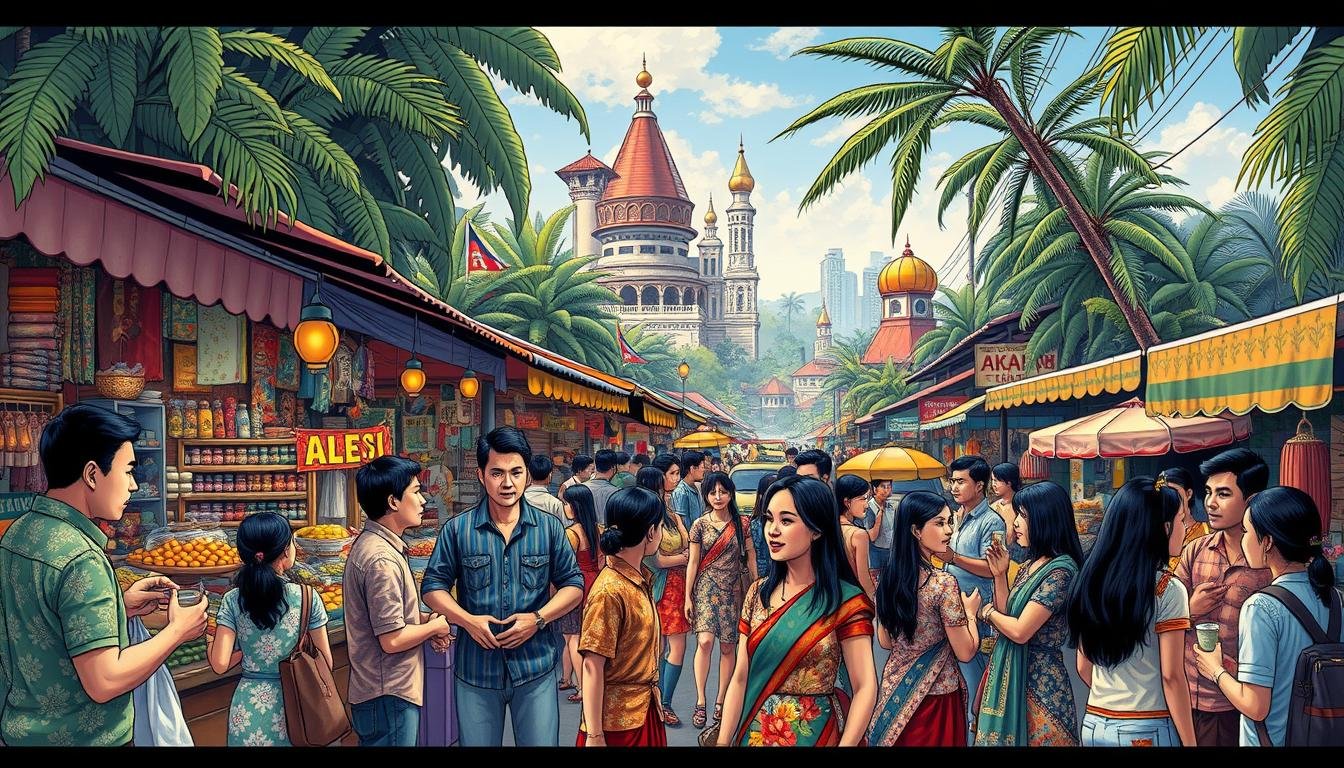What does it mean to be Filipino in today’s world? Cultural identity is always changing. How can Filipinos find their sense of self in these shifts?
The Philippines is growing, and its people face a big challenge. They must balance their cultural heritage with modern society. They also want to define their identity and culture in a real and meaningful way.
The country’s history and traditions shape the Filipino identity. But Western culture and social media have also changed how Filipinos see themselves. This leads to a complex and rich understanding of their culture and identity.
Key Takeaways
- Filipinos are navigating a complex and evolving cultural identity in a globalized world, where their sense of self is influenced by their culture.
- The country’s history and traditions are essential in shaping the Filipino identity, and understanding these is key for navigating their culture.
- The influence of Western culture and social media has had a significant impact on Filipino identity, contributing to the evolution of their culture.
- Filipinos are striving to balance their cultural heritage with the demands of modern society, all while trying to define their identity and culture.
- Understanding and navigating Filipino identity is vital in addressing the country’s challenges, including those related to culture and identity.
Cultural Identity in a Globalized Society
The world is getting more connected, changing how we see cultural identity. The Filipino diaspora has spread Filipino culture worldwide. But, it also brings up worries about discrimination and losing traditional values.
Globalization has made many cultures blend together, with Western culture leading the way. This has caused a drop in traditional values and pushed local cultures to the side. Yet, cultural exchange can also be good, bringing diversity and understanding.
Some important stats show how globalization affects cultural identity:
- More than 70% of content on global streaming platforms is Western media.
- Up to 80% of cultural productions in some areas are imports, not local.
- Supporting local industries could create 10-25% more jobs in the arts and culture sector.
We need to find a balance between keeping traditional cultural practices and moving forward. By promoting cultural understanding, we can build a more inclusive world. A world where diaspora experiences are valued, and discrimination is lessened.
Socioeconomic Challenges
The Filipino experience is shaped by many factors. These include income inequality, access to education, and healthcare disparities. These challenges are often linked to racism and identity, making inequalities worse. The SocioEconomic Challenges Journal says that economic growth and digitalization can greatly affect communities.
Some big challenges for Filipinos are:
- Income inequality, which limits access to education and healthcare
- Lack of quality education, which keeps poverty cycles going
- Healthcare disparities, hitting marginalized communities hard
To tackle these issues, we need a broad approach. We must consider how socioeconomic factors, racism, and identity interact. By tackling the root causes and seeking fair solutions, we can build a more just and inclusive society for all Filipinos.
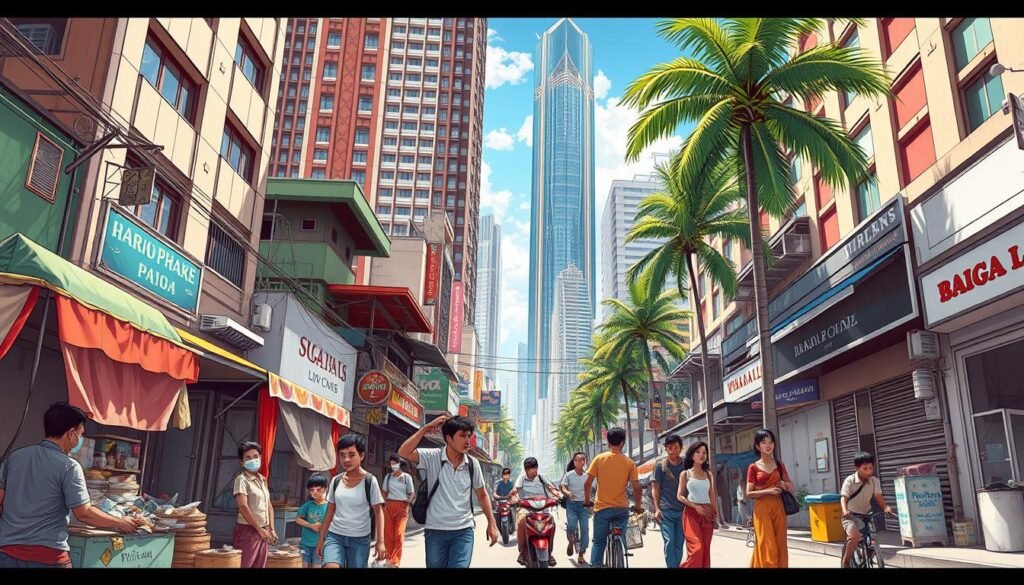
| Journal | ISSN (print) | ISSN (online) |
|---|---|---|
| SocioEconomic Challenges Journal | 2520-6621 | 2520-6214 |
The Role of Language
Language is key in shaping culture and identity in the Philippines. The country boasts over 180 languages, with Filipino and English being the most common. Some Filipinos worry that English might harm their identity.
Keeping indigenous languages alive is vital for the Philippines’ rich culture. Efforts include documenting languages and starting education programs. Yet, English is a must in education, business, and government. It’s a skill Filipinos need to succeed.
- Language is closely tied to culture and identity.
- English proficiency is essential for education and career advancement.
- Preserving indigenous languages is key to keeping the country’s rich culture.
| Language | Speakers | Region |
|---|---|---|
| Filipino | 45 million | National |
| English | 30 million | National |
| Cebuano | 20 million | Central Visayas |
Migration and Family Dynamics
Migration is a big part of today’s world. Many people move to find better lives. This creates a diaspora, where people from the same country live far apart. But, migrants often face discrimination in their new homes.
The Filipino diaspora is a good example. Many Filipinos have moved to other countries. This has changed family roles and responsibilities for over 60% of migrant parents.
Overseas Filipino Workers (OFWs)
OFWs are key to the Philippine economy. Many families depend on their money sent home. But, long-distance relationships can be tough. About 75% of migrant families use online tools to stay connected.
Effects of Long-Distance Relationships
Long-distance relationships can be hard on kids and the elderly. Many migrant families feel left out and isolated. This makes it hard for them to build new support systems.
Reintegration Challenges
Coming back home can be tough for migrants. They often face discrimination and struggle to get help. We need to support them with better policies and services, like education and healthcare.
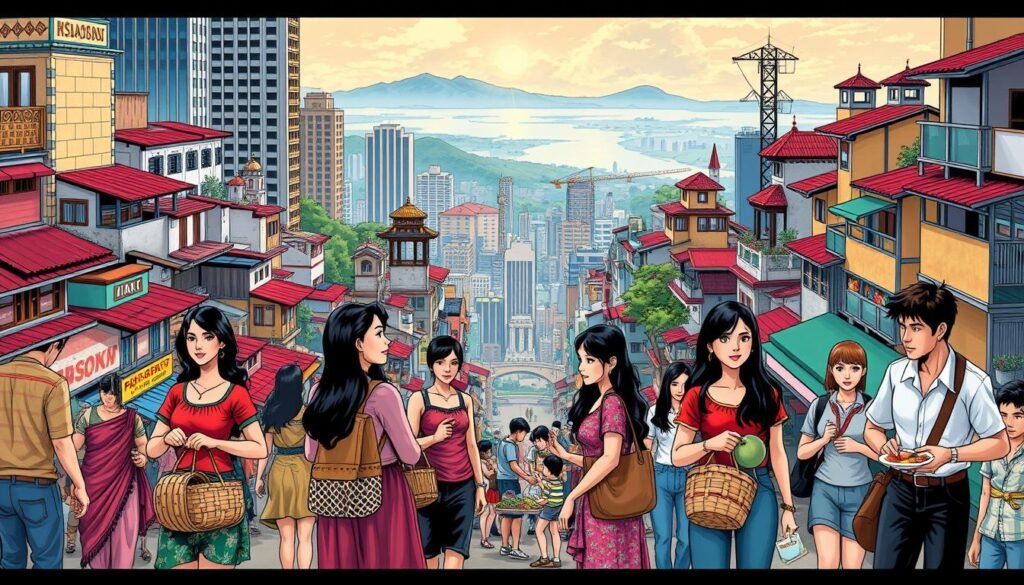
| Category | Percentage |
|---|---|
| Migrant parents experiencing altered traditional familial roles | 60% |
| Migrant families using virtual communication platforms | 75% |
| Migrant families reporting feelings of isolation | 40% |
Understanding migrant families’ challenges helps us create a better world. We can make a place where everyone feels welcome and supported.
Political Landscape
The political scene in the Philippines is complex. Different interests often cause disagreements. It’s key to understand public sentiment for political success. This is why knowing about power dynamics is important.
It’s vital to talk to decision-makers well. Doing so can lead to better laws. Building alliances and understanding cultural norms are also critical. Up to 70% of policy failures might be due to not understanding culture well enough.
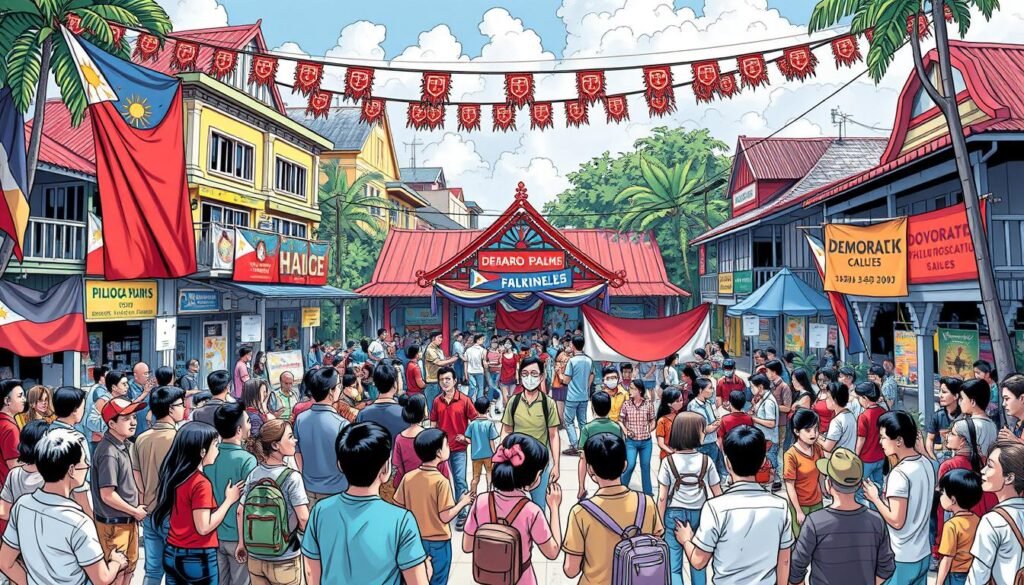
Keeping cultural identity alive is linked to political involvement. Citizens can fight for a fair society by tackling corruption. This means recognizing the role of gender in politics and encouraging activism for change.
Mental Health Awareness
Mental health is key to our overall well-being. It’s important to tackle the stigma around mental illness. Racism and discrimination can make mental health problems worse, making it hard for people to get help. At least one in six adults face mental health issues every week.
Common mental health problems include anxiety, depression, and mood disorders. These can show up as sadness, hopelessness, and fear. 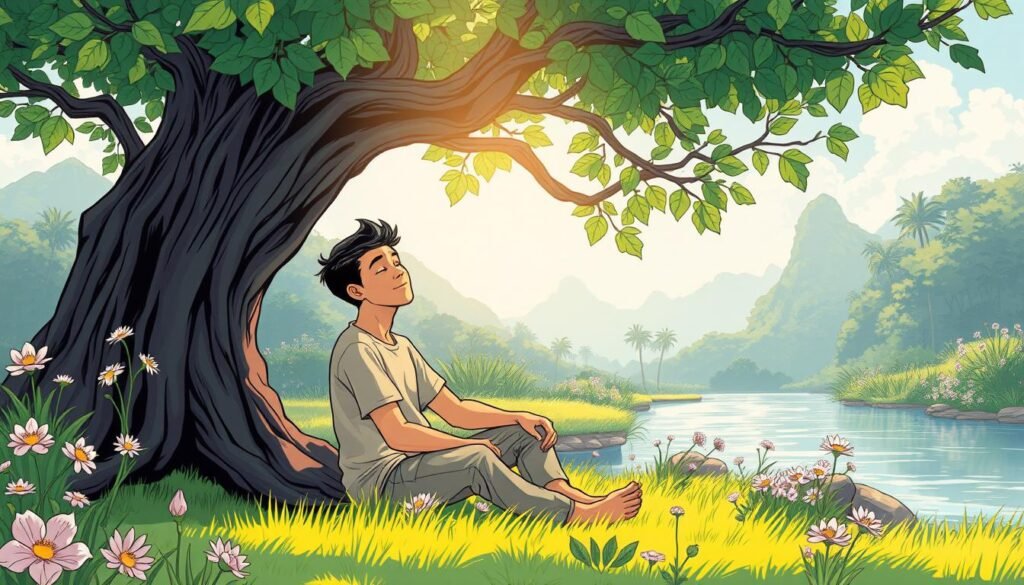
To improve mental wellness, we need to make support services easy to find. We also need to spread the word about mental health. This can be done through education, reaching out to communities, and tackling racism and discrimination. Together, we can help people get the help they need and manage their mental health better.
| Mental Health Condition | Prevalence |
|---|---|
| Anxiety Disorder | 19% of adults |
| Depression | 10% of adults |
| Mood Disorders | 10% of adults |
Getting help early and being open to change is key for those with mental health issues. By focusing on mental wellness and fighting racism and discrimination, we can build a more welcoming and supportive community.
Environmental Issues
The Philippines, like many countries, faces big environmental challenges. These challenges affect its culture and identity. Climate change is a major issue, causing rising temperatures and more natural disasters.
2023 was the hottest year on record, with temperatures 1.46C above pre-industrial levels.
Some key environmental issues in the Philippines include:
- Climate change impacts on communities, such as sea-level rise and more frequent typhoons
- Natural disasters, like earthquakes and volcanic eruptions, which can have devastating effects on the environment and human settlements
- Lack of sustainable practices, including deforestation and pollution, which threaten the country’s biodiversity and natural resources
A study on the curious case of Emiliano Riego de shows the struggles of marginalized communities. This highlights the social and environmental challenges faced by the Philippines. To tackle these, adopting sustainable practices and reducing emissions is key.
The Philippines can learn from Sweden. Sweden has a carbon tax, cutting emissions by 25% while its economy grew 75% from 1995. By promoting sustainability, the Philippines can fight climate change and protect its natural heritage.

Working together, the Philippines can ensure a sustainable future. This will preserve its rich culture and identity for future generations.
| Environmental Issue | Impact | Solution |
|---|---|---|
| Climate Change | Rising temperatures, more frequent natural disasters | Reduce greenhouse gas emissions, promote sustainable practices |
| Deforestation | Habitat loss, biodiversity decline | Implement reforestation programs, protect natural habitats |
| Pollution | Health problems, environmental degradation | Implement pollution reduction measures, promote recycling and waste management |
Identity Among Youth
Young Filipinos face a mix of cultural heritage and modern trends. This leads to a deep search for identity. The Filipino diaspora has spread worldwide, with many young people trying to grasp their roots and adapt to new places.
Studies show that about 30% of teens struggle with identity issues, causing anxiety and low self-esteem. Around 20% of adolescents deal with anxiety and depression, often because of identity problems. Also, 40% of teens feel pressured to fit in with their peers, affecting their uniqueness.
Social media greatly affects how youth form their identity. About 70% of teens feel not good enough when they see perfect images online. This shows how digital media shapes their self-image. As the Filipino diaspora expands, understanding these influences is key.
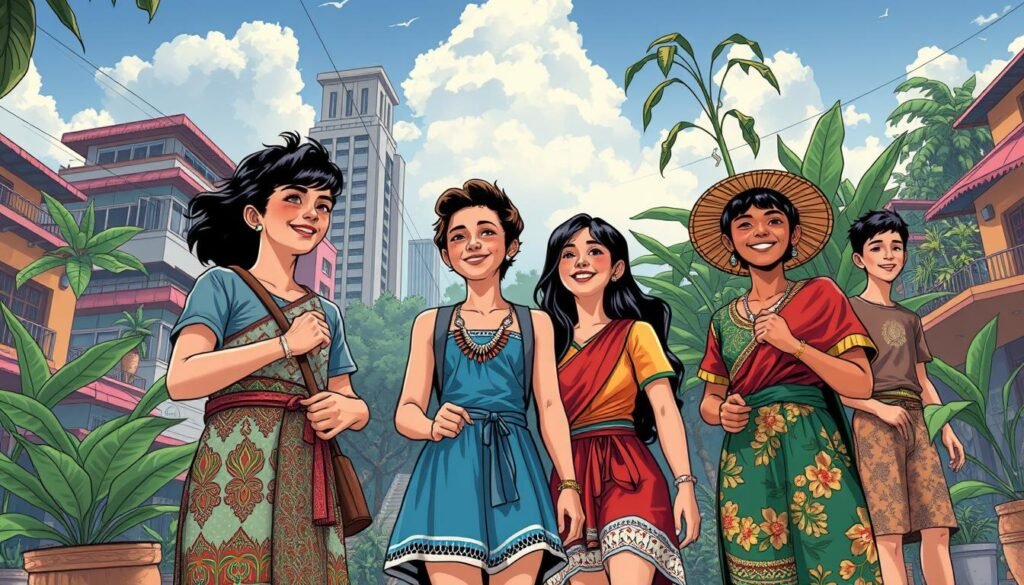
To help Filipino youth develop a strong identity, we need to create supportive spaces. This means counseling, joining support groups, or family therapy. By recognizing the challenges of identity in the Filipino diaspora, we can build a welcoming community for young people to flourish.
Gender Roles and Expectations
Gender roles in the Filipino culture are changing. There’s a growing push for equality and less discrimination. The old family setup, where men ruled and women followed, is being questioned. Now, people want freedom and fairness for all.
More than 575 million girls face unfair gender norms in their countries. This affects their health, education, marriage, and safety. In the Philippines, efforts to empower women are on the rise. These focus on education and speaking out for equality.
Some important stats show why change is needed:
- 1 in 3 women face gender-based violence at some point in their lives.
- Girls do most of the household chores, which hurts their school time.
- Women do way more unpaid work than men, like caring for the family.
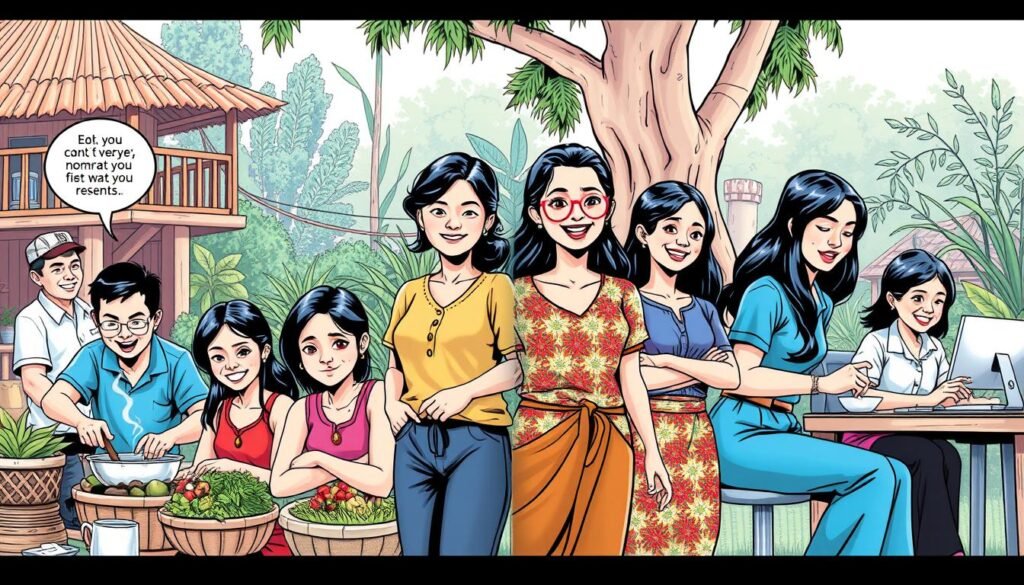
It’s vital to tackle discrimination and push for equality. By fighting old gender norms and supporting education and empowerment, we can build a fairer world. A world where everyone can succeed.
The Importance of Community
Community is key in shaping our identity and culture. It gives us a sense of belonging and support, which is vital for our well-being. Research shows that being part of a community can lead to better outcomes. This is because public leaders who listen to community needs can better address them.
Some key benefits of community engagement include:
- Improved social cohesion
- Increased trust in government
- Enhanced participation in decision-making processes
Also, community-based efforts are effective in tackling social issues and fighting for justice. The idea of social capital highlights the role of relationships in communities. These relationships help societies work well together.
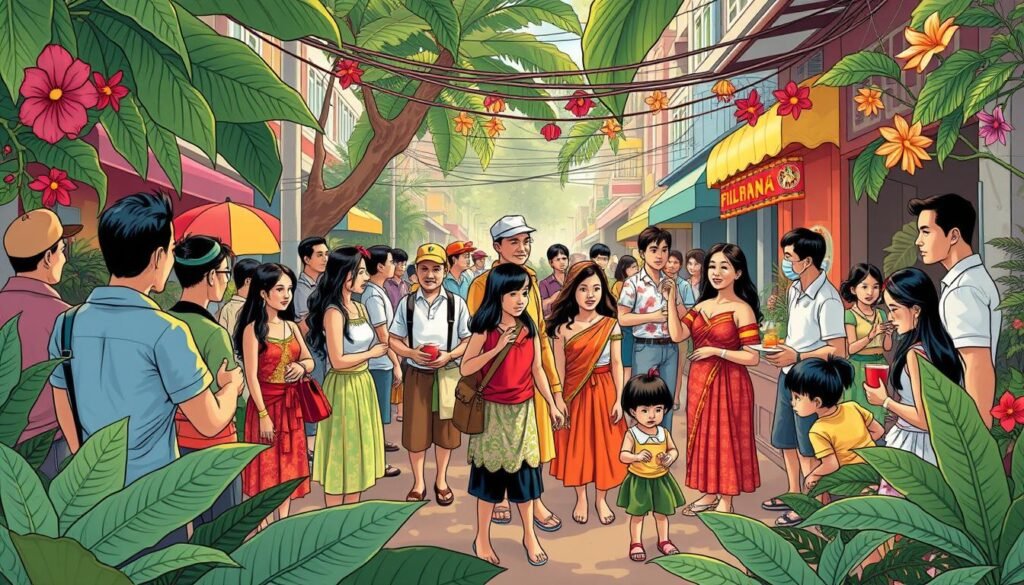
By getting involved in our community, we help keep our culture alive and our identity strong. We can do this by attending local events, volunteering, and backing community projects. This way, we build stronger, more united communities that grow and thrive together.
| Community Engagement | Benefits |
|---|---|
| Participating in local events | Promotes social cohesion and cultural exchange |
| Volunteering | Enhances community trust and social capital |
| Supporting community-based initiatives | Advocates for justice and addresses social issues |
Navigating Racial and Ethnic Identity
Understanding racial and ethnic identity is key in today’s world. Racism and discrimination are big problems. Ethnic minorities face a lot of challenges, showing we need a society that accepts everyone.
Research shows that ethnicity affects many areas of life. It’s important to tackle these issues head-on. This way, we can build a fairer world for everyone.
A study by racial and ethnic identity development experts highlights the value of celebrating diversity in the Philippines. We can do this by being more inclusive and tackling racism and discrimination. Here are some ways to promote inclusivity:
- Encouraging cultural exchange and understanding
- Supporting diversity and inclusion initiatives
- Addressing and overcoming biases and stereotypes
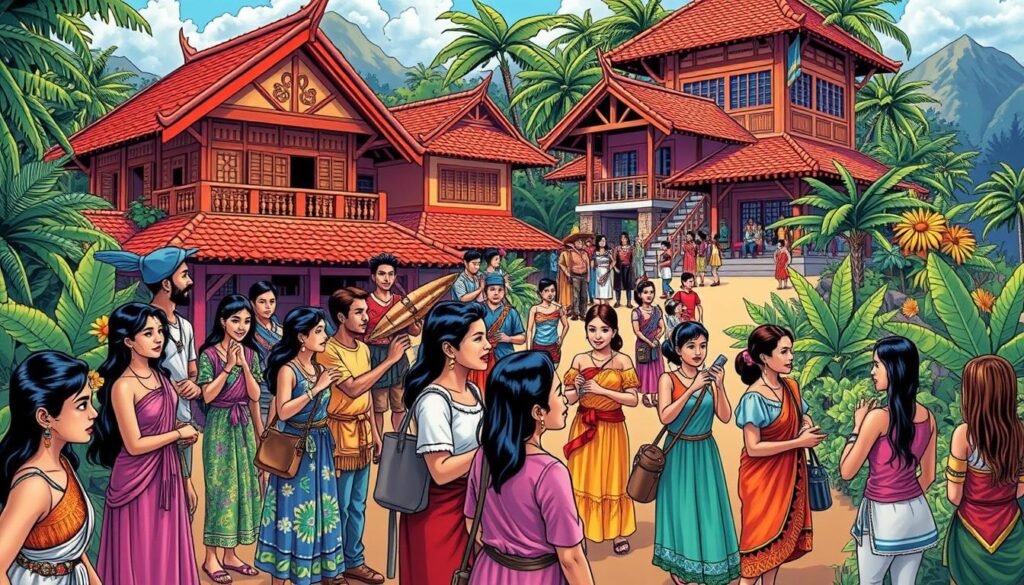
Together, we can make society more inclusive and fair. Experts say that ethnic identity is complex, tied to nationality, religion, and language. We must approach these issues with care and understanding.
Digital Transformation
The digital transformation in the Philippines is changing how we interact, work, and consume. This change is deeply affecting the country’s culture and identity. It’s vital that everyone, no matter their background, has access to technology.
Some big challenges come with digital transformation:
- Access to technology and the digital divide
- Impact on employment and skills
- The rise of e-commerce
Recent data shows that organizations with a solid change management plan are six times more likely to succeed in digital transformation. Yet, 54% of organizations struggle to meet their goals because they lack skilled employees.
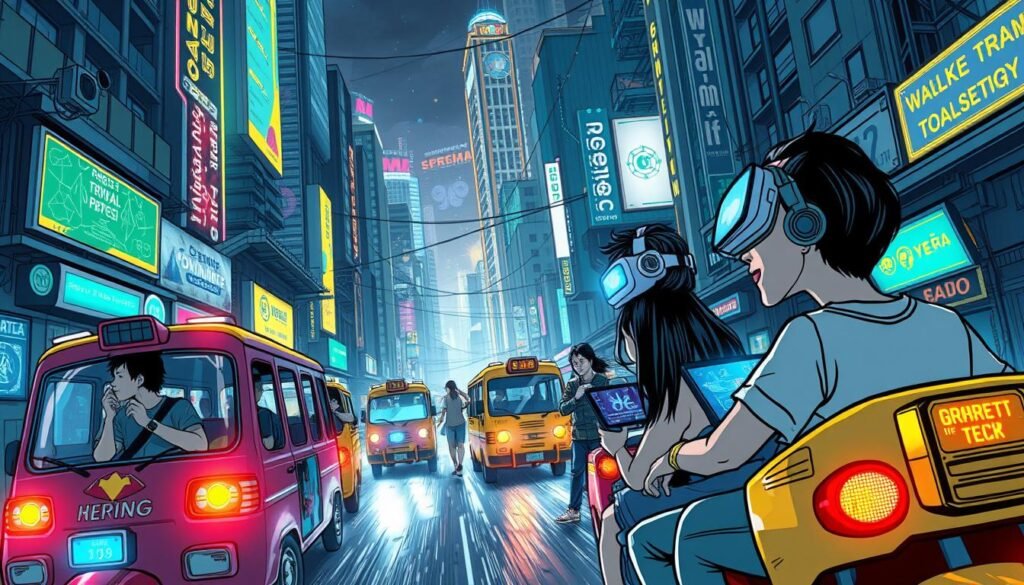
As the Philippines moves forward in digital transformation, tackling these challenges is key. It’s important to keep the country’s culture and identity strong and vibrant.
| Challenge | Percentage of Organizations Affected |
|---|---|
| Access to technology and digital divide | 40% |
| Impact on employment and skills | 54% |
| Rise of e-commerce | 75% |
Preserving Filipino Arts and Culture
The Philippines boasts a rich and diverse culture that spans centuries. Traditional artworks are made from materials like wood, paper, and fabric. These materials can decay over time. Digital technology is key in documenting and conserving Philippine art.
Efforts to preserve cultural heritage are underway. Museums and cultural institutions are digitizing art collections. They create high-resolution digital images to preserve artworks despite physical decay. Digital platforms like Instagram, Facebook, and YouTube help artists reach a global audience, promoting Filipino art and identity.
Initiatives like the Kreative Growth grant support artists financially. Programs like Balay Kreavite offer free tuition in masterclasses. These programs aim to foster artistic growth and community engagement.
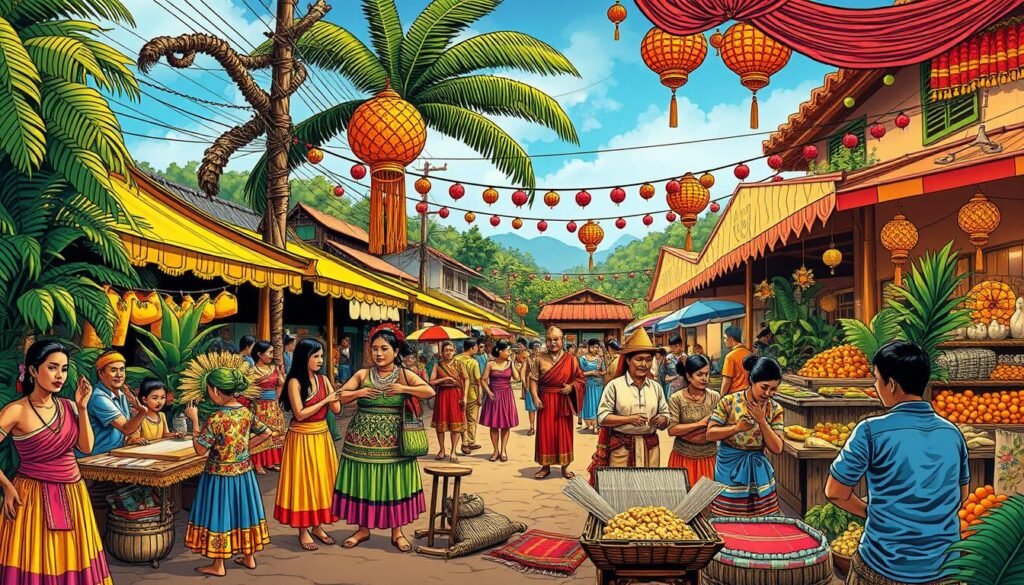
Digital platforms and preserving traditional artworks keep Filipino art alive. This makes it a vibrant part of the country’s culture and identity. It not only promotes Filipino art but also enriches the country’s cultural heritage for future generations.
| Initiative | Purpose |
|---|---|
| Kreative Growth grant | Financial support for artists |
| Balay Kreavite | Free tuition in masterclasses |
Looking to the Future
Looking at the Filipino diaspora’s challenges, we see a need for balance. We must embrace change while keeping our cultural identity strong. The resilience and adaptability of the Filipino have been tested many times. Yet, their spirit and determination to unite remain strong.
The lessons from Filipino heroes like Mariano show us that progress needs bold steps and strategic thinking. By using this resilience, Filipinos can celebrate their diaspora and identity. This way, they can honor their heritage while embracing new opportunities.
The Filipino diaspora must navigate the 21st century’s complexities. The key is to build unity and empower the youth. We also need policies that support all Filipinos. With their roots in mind and a vision for tomorrow, Filipinos can overcome challenges and become a resilient, innovative, and influential community.
FAQ
What are the key challenges of being Filipino in the modern world?
Being Filipino today means dealing with identity, culture, and heritage in a fast-changing world. Filipinos must keep their traditions alive while facing Western culture and globalization.
How does the concept of diaspora and discrimination affect the Filipino experience?
The Filipino diaspora brings unique challenges in keeping cultural identity. Filipinos also face racism and discrimination, affecting their sense of belonging and self-worth.
What are the socioeconomic challenges facing Filipinos?
Filipinos struggle with income inequality, limited education, and healthcare disparities. These issues hurt certain groups more, leading to systemic inequalities.
How does the role of language shape Filipino culture and identity?
The Philippines’ many languages and English play big roles in culture and identity. Saving indigenous languages is key to heritage. English skills have both good and bad sides for Filipinos.
How does migration affect Filipino families and communities?
Migration, like that of OFWs, changes family and community life. Long-distance relationships and reintegration can strain bonds and social ties.
What are the political and civic engagement challenges faced by Filipinos?
The Philippines’ politics are tough, with corruption and civic challenges. These issues affect cultural identity and the country’s direction.
How is mental health awareness and support addressed within the Filipino community?
Mental health is a big issue in the Filipino community. Stigma, access to care, and well-being initiatives are key to addressing it.
What are the environmental challenges facing the Philippines and how do they intersect with Filipino identity?
Climate change and natural disasters threaten the Philippines’ culture and people. Sustainable efforts and community actions are vital to protect identity and livelihoods.
How do Filipino youth navigate the complexities of identity formation in a changing world?
Filipino youth face challenges in finding their cultural identity. They must deal with social media, modernity, and traditional values. Supportive environments are essential for positive identity growth.
What are the evolving gender roles and expectations in Filipino society?
Gender roles in the Philippines are changing, with a focus on women’s empowerment. Addressing gender-based violence and promoting equality are key to shaping society’s future.
How does the Filipino community foster a sense of identity and belonging?
The Filipino community values local groups, support networks, and cultural festivals. These help maintain identity and belonging, preserving heritage and community ties.
What are the challenges of navigating racial and ethnic identity within the Philippines?
The Philippines is diverse, with various racial and ethnic groups. Overcoming discrimination and promoting inclusivity are essential for a fair and accepting society.
How is the digital transformation affecting the Filipino experience?
Digital changes in the Philippines, like technology access and e-commerce, are transforming life. Ensuring digital literacy and access is vital for everyone to benefit.
What efforts are being made to preserve Filipino arts and culture?
Efforts to protect Filipino arts and culture are ongoing. This includes safeguarding heritage sites and supporting artists and crafts. These efforts are vital for the country’s cultural legacy.
Source Links
- What Problem with Filipino Identity? – https://www.getrealphilippines.com/2016/02/filipino-identity/
- Culture Clash: Traditional Values and Modern Challenges in Filipino Families – https://mariaisquixotic.com/modern-challenges-filipino-families/
- The Filipino Resilience as a Form of Systemic Burden – https://girlpowertalk.com/filipino-resilience-as-a-form-of-systemic-burden/
- Globalization and its Impact on Cultural Identity: An Analysis – https://jihaneziyan.medium.com/globalization-and-its-impact-on-cultural-identity-an-analysis-9e531b22f66e
- Globalisation and Identity – https://www.iemed.org/publication/globalisation-and-identity-2/
- Microsoft Word – Kaul pdf – https://www.interesjournals.org/articles/globalisation-and-crisis-of-cultural-identity.pdf
- SocioEconomic Challenges (SEC) | ArmgPublishing – https://armgpublishing.com/journals/sec/
- SocioEconomic Challenges (SEC) – https://sciendo.com/journal/SEC
- Language Challenges & Recommendations – https://serc.carleton.edu/sage2yc/geo_ell/language_challenges.html
- PDF – https://www.ripublication.com/ijeisv1n1/ijeisv4n1_13.pdf
- PDF – http://ijariie.com/AdminUploadPdf/Language_Across_the_Curriculum__Implications_and_Challenges_ijariie14988.pdf?srsltid=AfmBOorYl_jKqb8uEC5AkbNQGJe4bR9wvNn966TuKCj6svZ6Aq1mjBuk
- Impact Of Migration On Family Dynamics And Social Networks – https://bpasjournals.com/library-science/index.php/journal/article/view/2064
- PDF – https://social.desa.un.org/sites/default/files/Paper Rumaya Juhari.pdf
- 🎒 Online Politics Undergraduate Tutors Spires™ | Overcoming Politics Challenges: Common Problems And Solutions – https://spires.co/online-politics-tutors/undergraduate/overcoming-politics-challenges-common-problems-and-solutions
- Navigating the Challenges of the U.S. Political Landscape – https://www.pewtrusts.org/en/trust/archive/winter-2024/navigating-the-challenges-of-the-us-political-landscape
- About mental health problems – https://www.mentalhealth.org.uk/explore-mental-health/about-mental-health-problems
- The Importance of Mental Health Awareness – Pine Rest Newsroom – https://www.pinerest.org/newsroom/articles/mental-health-awareness-blog/
- The Biggest Environmental Problems Of 2021 – https://earth.org/the-biggest-environmental-problems-of-our-lifetime/
- Environmental Issues – Solutions To The Issues – https://byjus.com/biology/environmental-issues-solutions/
- Adolescent Identity – Challenges of Self-Discovery – https://manochikitsa.com/adolescent-identity-challenges-of-self-discovery/
- The Development of Self and Identity in Adolescence: Neural Evidence and Implications for a Value-Based Choice Perspective on Motivated Behavior – https://pmc.ncbi.nlm.nih.gov/articles/PMC6667174/
- Online Counselling | Online Therapy| Marriage Counsellors | TalktoAngel – https://www.talktoangel.com/blog/challenges-of-identity-formation-during-adolescence
- How Harmful Gender Norms Create an Unequal World for Children – https://www.savethechildren.org/us/charity-stories/how-gender-norms-impact-boys-and-girls
- Gender stereotypes and expectations | GDHR – http://gdhr.wa.gov.au/before-you-start/educator-notes/gender-stereotypes-and-expectations
- Why is Community Engagement Important? – https://granicus.com/blog/why-is-community-engagement-important/
- Purkh – https://www.purkh.com/articles/the-role-of-community-in-social-development-foundations-challenges-and-future-directions-110559.html
- PDF – https://www.primescholars.com/articles/navigating-the-complexity-of-ethnicity-understanding-its-significance-challenges-and-evolution.pdf
- Ethnic and Racial Identity During Adolescence and Into Young Adulthood: An Integrated Conceptualization – https://pmc.ncbi.nlm.nih.gov/articles/PMC6673642/
- 11 Critical Digital Transformation Challenges to Overcome (2025) – https://whatfix.com/blog/digital-transformation-challenges/
- The three challenges of digital transformation – https://www.eiu.com/n/the-three-challenges-of-digital-transformation/
- 10 Digital Transformation Challenges to Overcome – https://www.univio.com/blog/10-critical-digital-transformation-challenges-to-overcome/
- Preserving and promoting Philippine art in the digital age – ARTventure Magazine – https://artventuremagazine.com/preserving-and-promoting-philippine-art-in-the-digital-age/
- Preserving Indigenous Philippine Art and Culture with Kristian Kabuay — Balay Kreative – https://balaykreative.org/stories-content/preserving-indigenous-philippine-art-and-culture-with-kristian-kabuay
- 10 grand challenges we’ll face by 2050 – https://www.bbc.com/future/article/20170713-what-will-the-challenges-of-2050-be
- 10 Ways How to Overcome Challenges Life Throws at You – https://www.uopeople.edu/blog/10-ways-how-to-overcome-challenges/
- Experts Say the ‘New Normal’ in 2025 Will Be Far More Tech-Driven, Presenting More Big Challenges – https://www.pewresearch.org/internet/2021/02/18/experts-say-the-new-normal-in-2025-will-be-far-more-tech-driven-presenting-more-big-challenges/

